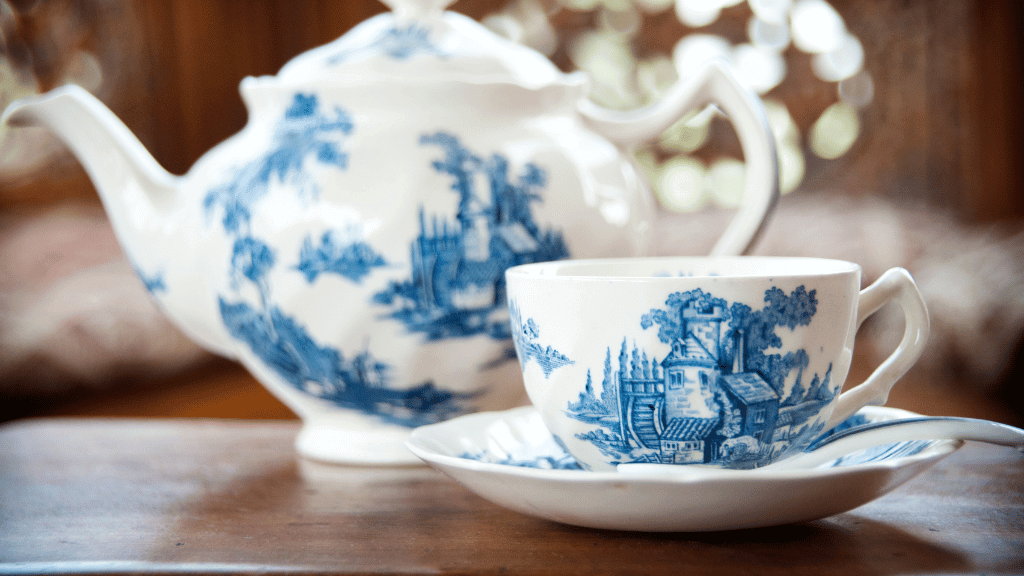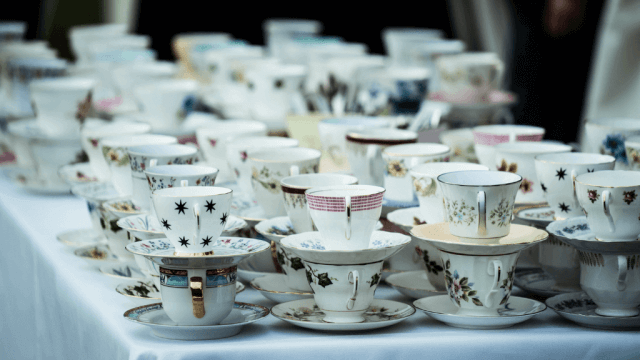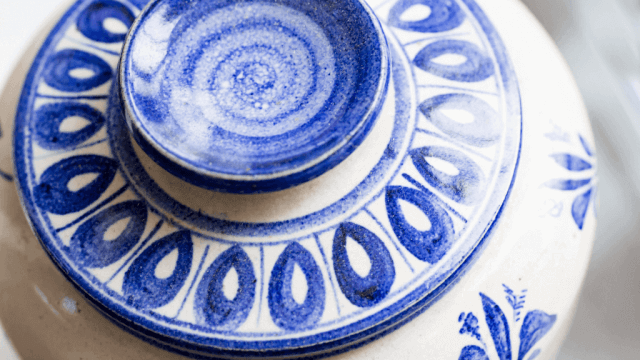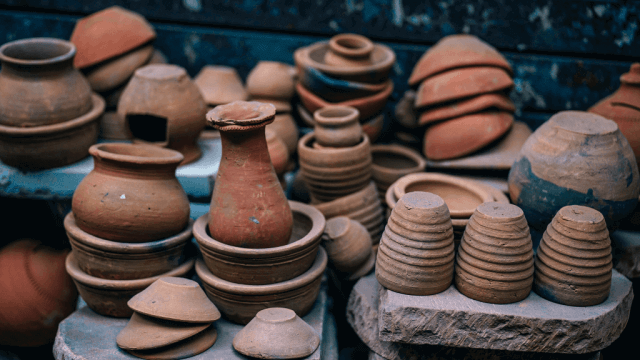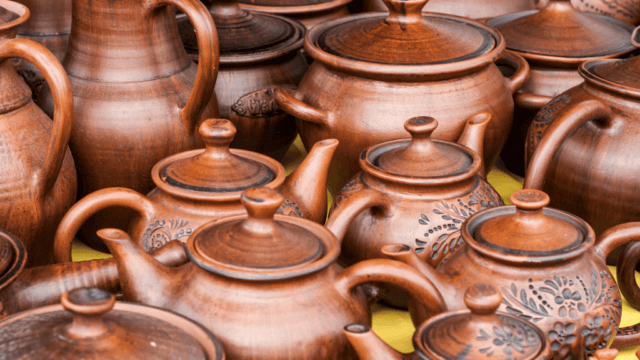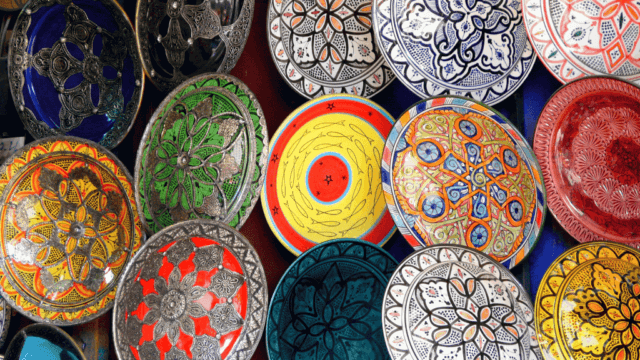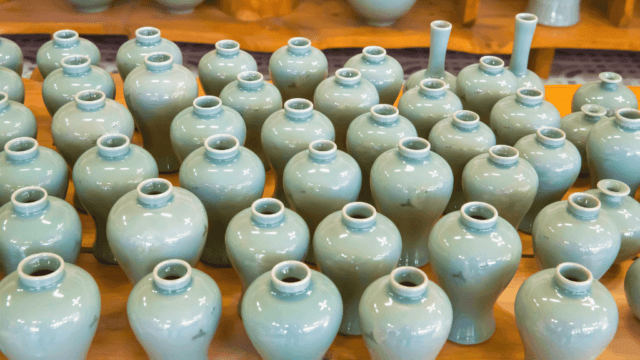Porcelain pottery refers to a high-firing ceramic made from kaolin clay, fired at temperatures around 1200-1400°C.
Its properties include translucency, toughness, whiteness, and smoothness.
Porcelain pottery is known for its beauty, durability, and delicate designs.
Introduction to Porcelain Pottery
Porcelain pottery is a highly regarded form of ceramics made from fine kaolin clay, a primary ingredient that sets it apart from other ceramic types.
Beloved for its beauty, delicate designs, and durability, porcelain pottery has been treasured for centuries.
Composition and Firing Process
Porcelain pottery is primarily composed of kaolin clay, combined with other mineral elements like feldspar and silica.
The firing process involves high temperatures, usually ranging between 1200-1400°C, which leads to key characteristics such as translucency, toughness, whiteness, and smoothness.
Types of Porcelain Pottery
There are several types of porcelain pottery, classified by factors like color and production methods.
The primary types include:
- Hard-paste porcelain: Traditional porcelain made from kaolin and feldspathic material, fired at the highest temperatures
- Soft-paste porcelain: Made by blending kaolin with frit, a type of fusible glass paste, and fired at lower temperatures
- Bone china: Porcelain containing bone ash, giving it a warm white color and increased translucency
History and Origin of Porcelain Pottery
Porcelain pottery originated in China around the 7th century, with its discovery credited to the Tang Dynasty.
However, it was during the Song Dynasty that porcelain truly flourished.
Through centuries of innovation, the art was perfected and spread across the world, becoming a symbol of prestige and luxury.
Today, regions like Jingdezhen, China, and Meissen, Germany, are renowned porcelain centers.
Porcelain Pottery Techniques
Common techniques used to create porcelain pottery include:
- Slip casting: Liquid clay is poured into a mold and allowed to dry, forming a thin, even layer
- Wheel throwing: Clay is shaped on a potter’s wheel, creating a variety of forms and shapes
- Hand-building: Clay is shaped by hand or using tools, allowing for intricate designs and unique shapes
Glazing and Decoration
To finish, porcelain pottery is often decorated with glazes or intricate designs.
Some popular methods include:
- Underglaze painting: Applying painted motifs or designs to pottery, then covering it with a clear glaze before firing
- Overglaze painting: Decorating with motifs or designs after the initial glaze firing, followed by a lower-temperature firing
- Transfer printing: Transferring pre-printed designs onto pottery using a paper template, providing consistency and precision
Characteristics and Uses of Porcelain Pottery
Porcelain pottery is known for its unique traits that make it an ideal choice for various applications.
Some key characteristics include:
- Translucency: Thin porcelain wares have a translucent quality when held to light, creating a beautiful effect
- Strength: Due to the high firing temperature, porcelain is strong and durable, making it suitable for daily use
- Non-porous: Porcelain has a low porosity, which makes it resistant to staining and ideal for food-safe items
- Thermal retention: Porcelain’s low thermal conductivity allows it to retain heat, perfect for serving hot beverages or meals
These properties make porcelain pottery suitable for a variety of items, from dinnerware and teapots to decorative vases and sculptures.
Maintaining and Caring for Porcelain Pottery
While porcelain pottery is strong and durable, it still requires proper care to preserve its beauty and functionality.
Here are some tips for maintaining your porcelain:
- Washing: Hand wash using warm, soapy water and dry with a soft cloth to prevent scratching
- Avoiding sudden temperature changes: Do not subject porcelain to abrupt temperature shifts, as thermal shock could lead to cracks
- Using caution with gold or silver accents: Items with metallic accents should not be microwaved or placed in a dishwasher to prevent damage
- Storing carefully: Store porcelain separately or with padding between items to avoid chipping and scratching
Identifying and Valuing Porcelain Pottery
Understanding how to identify and value porcelain pottery is essential for any collector or enthusiast.
Details to consider when evaluating porcelain include:
- Maker’s marks: Inspect items for marks or signatures to determine the manufacturer, artist, or production period
- Quality of material and craftsmanship: High-quality porcelain is typically thinner, smoother, and displays a refined level of detailing
- Rarity: Limited edition or unique pieces may fetch higher values due to their scarcity
- Condition: Damage or restoration can affect a piece’s value; pristine condition is most desirable
FAQ Section: Porcelain Pottery
Discover more about porcelain pottery by exploring answers to some of the most frequently asked questions on the topic.
What is the primary material used for making porcelain?
Porcelain is primarily made from fine white clay called kaolin, which is combined with other materials like feldspar, silica, and sometimes bone ash to create different types of porcelain pottery.
How is porcelain different from other types of ceramics?
Porcelain is distinguished by its unique properties, such as its whiteness, translucency, toughness, and smoothness, as well as the high firing temperatures it requires – typically around 1200-1400°C.
What is the difference between hard-paste porcelain, soft-paste porcelain, and bone china?
Hard-paste porcelain is made from kaolin and feldspathic material fired at the highest temperatures, while soft-paste porcelain uses frit, a fusible glass paste, to create a lower melting point.
Bone china, on the other hand, contains bone ash, which gives it a warmer white color and increased translucency.
What are some popular techniques used to create porcelain pottery?
Key techniques employed in porcelain pottery creation include slip casting, where liquid clay is poured into a mold, wheel throwing, which shapes clay on a potter’s wheel, and hand-building, where clay is molded using hands or tools.
How do I care for and maintain my porcelain pottery?
To care for your porcelain pottery, hand wash gently with warm, soapy water, use a soft cloth for drying, avoid sudden temperature changes, handle items with gold or silver accents carefully, and store items with padding to prevent chipping and scratching.
